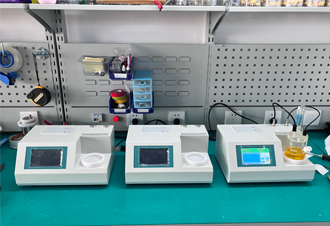 English
English



-
 Afrikaans
Afrikaans -
 Albanian
Albanian -
 Amharic
Amharic -
 Arabic
Arabic -
 Armenian
Armenian -
 Azerbaijani
Azerbaijani -
 Basque
Basque -
 Belarusian
Belarusian -
 Bengali
Bengali -
 Bosnian
Bosnian -
 Bulgarian
Bulgarian -
 Catalan
Catalan -
 Cebuano
Cebuano -
 China
China -
 China (Taiwan)
China (Taiwan) -
 Corsican
Corsican -
 Croatian
Croatian -
 Czech
Czech -
 Danish
Danish -
 Dutch
Dutch -
 English
English -
 Esperanto
Esperanto -
 Estonian
Estonian -
 Finnish
Finnish -
 French
French -
 Frisian
Frisian -
 Galician
Galician -
 Georgian
Georgian -
 German
German -
 Greek
Greek -
 Gujarati
Gujarati -
 Haitian Creole
Haitian Creole -
 hausa
hausa -
 hawaiian
hawaiian -
 Hebrew
Hebrew -
 Hindi
Hindi -
 Miao
Miao -
 Hungarian
Hungarian -
 Icelandic
Icelandic -
 igbo
igbo -
 Indonesian
Indonesian -
 irish
irish -
 Italian
Italian -
 Japanese
Japanese -
 Javanese
Javanese -
 Kannada
Kannada -
 kazakh
kazakh -
 Khmer
Khmer -
 Rwandese
Rwandese -
 Korean
Korean -
 Kurdish
Kurdish -
 Kyrgyz
Kyrgyz -
 Lao
Lao -
 Latin
Latin -
 Latvian
Latvian -
 Lithuanian
Lithuanian -
 Luxembourgish
Luxembourgish -
 Macedonian
Macedonian -
 Malgashi
Malgashi -
 Malay
Malay -
 Malayalam
Malayalam -
 Maltese
Maltese -
 Maori
Maori -
 Marathi
Marathi -
 Mongolian
Mongolian -
 Myanmar
Myanmar -
 Nepali
Nepali -
 Norwegian
Norwegian -
 Norwegian
Norwegian -
 Occitan
Occitan -
 Pashto
Pashto -
 Persian
Persian -
 Polish
Polish -
 Portuguese
Portuguese -
 Punjabi
Punjabi -
 Romanian
Romanian -
 Russian
Russian -
 Samoan
Samoan -
 Scottish Gaelic
Scottish Gaelic -
 Serbian
Serbian -
 Sesotho
Sesotho -
 Shona
Shona -
 Sindhi
Sindhi -
 Sinhala
Sinhala -
 Slovak
Slovak -
 Slovenian
Slovenian -
 Somali
Somali -
 Spanish
Spanish -
 Sundanese
Sundanese -
 Swahili
Swahili -
 Swedish
Swedish -
 Tagalog
Tagalog -
 Tajik
Tajik -
 Tamil
Tamil -
 Tatar
Tatar -
 Telugu
Telugu -
 Thai
Thai -
 Turkish
Turkish -
 Turkmen
Turkmen -
 Ukrainian
Ukrainian -
 Urdu
Urdu -
 Uighur
Uighur -
 Uzbek
Uzbek -
 Vietnamese
Vietnamese -
 Welsh
Welsh -
 Bantu
Bantu -
 Yiddish
Yiddish -
 Yoruba
Yoruba -
 Zulu
Zulu
Understanding Transformer Voltage Measurement Techniques and Their Applications in Electrical Engineering
Understanding Measure Transformer Voltage A Comprehensive Overview
In the realm of electrical engineering, measuring transformer voltage is a critical aspect that ensures the safe and efficient operation of electrical systems. Transformers are vital devices that facilitate the transfer of electrical energy between circuits through electromagnetic induction. They work by altering the voltage levels, enabling efficient power distribution over long distances. However, making accurate measurements of the voltage in transformers is essential for several reasons, including system reliability, safety, and regulatory compliance.
The fundamental role of a transformer is to step up or step down voltage levels. For instance, in power distribution systems, high voltages are required to minimize losses during transmission, while lower voltages are necessary for safe consumption at residential and commercial levels. To ensure the optimal functioning of these transformers, accurate voltage measurements must be performed. This is where the measurement transformer comes into play.
Measurement transformers, specifically potential transformers (PTs) and current transformers (CTs), are designed to provide scaled-down voltage and current signals for measurement and protection purposes. These devices allow engineers to monitor and control electrical systems without directly exposing instruments to high voltage, which significantly mitigates safety risks.
measure transformer voltage

When it comes to measuring transformer voltage, it is crucial to implement proper techniques and instruments. Voltage measurement can be achieved using various methods, including the use of multimeters, oscilloscopes, and specialized voltage measurement equipment. Accurate calibration of these instruments is vital to ensure that the readings reflect the true voltage levels within the transformer.
Another important factor in measuring transformer voltage is understanding the phase relationships between primary and secondary voltages
. This requires an in-depth analysis of the transformer's winding configurations—whether delta or wye configurations—as these impact voltage levels and phase angles.Furthermore, regular testing and maintenance of measurement transformers are essential practices. Over time, insulation degradation, thermal aging, and environmental exposure can affect their performance. Periodic testing not only enhances reliability but also ensures compliance with safety standards and regulations.
In conclusion, measuring transformer voltage plays an integral role in the overall functionality of electrical systems. By employing measurement transformers and adhering to best practices in voltage measurement, engineers can ensure the safety, efficiency, and reliability of electrical networks. As technology advances, continuous improvements in measurement techniques will further enhance our ability to monitor and control electrical systems effectively.
-
Exploring the Main Types of Industrial Endoscopes and Their Applications Across IndustriesNewsJul.04,2025
-
Testing Equipment Industry Sees Major Advancements in 2025: Smart & Precision Technologies Lead the WayNewsJun.06,2025
-
Applications of Direct Current Generators in Renewable Energy SystemsNewsJun.05,2025
-
Hipot Tester Calibration and Accuracy GuidelinesNewsJun.05,2025
-
Digital Circuit Breaker Analyzer Features and BenefitsNewsJun.05,2025
-
Benefits of Real-Time Power Quality Monitoring Devices for Industrial EfficiencyNewsJun.05,2025



